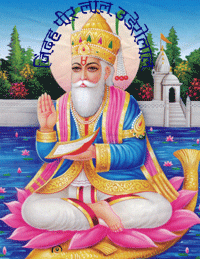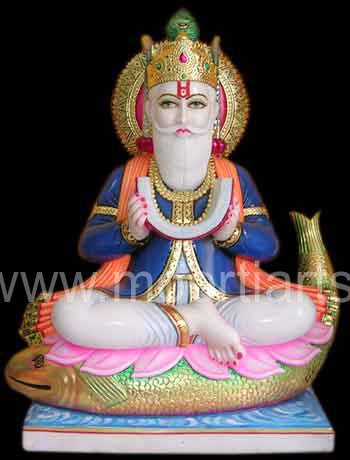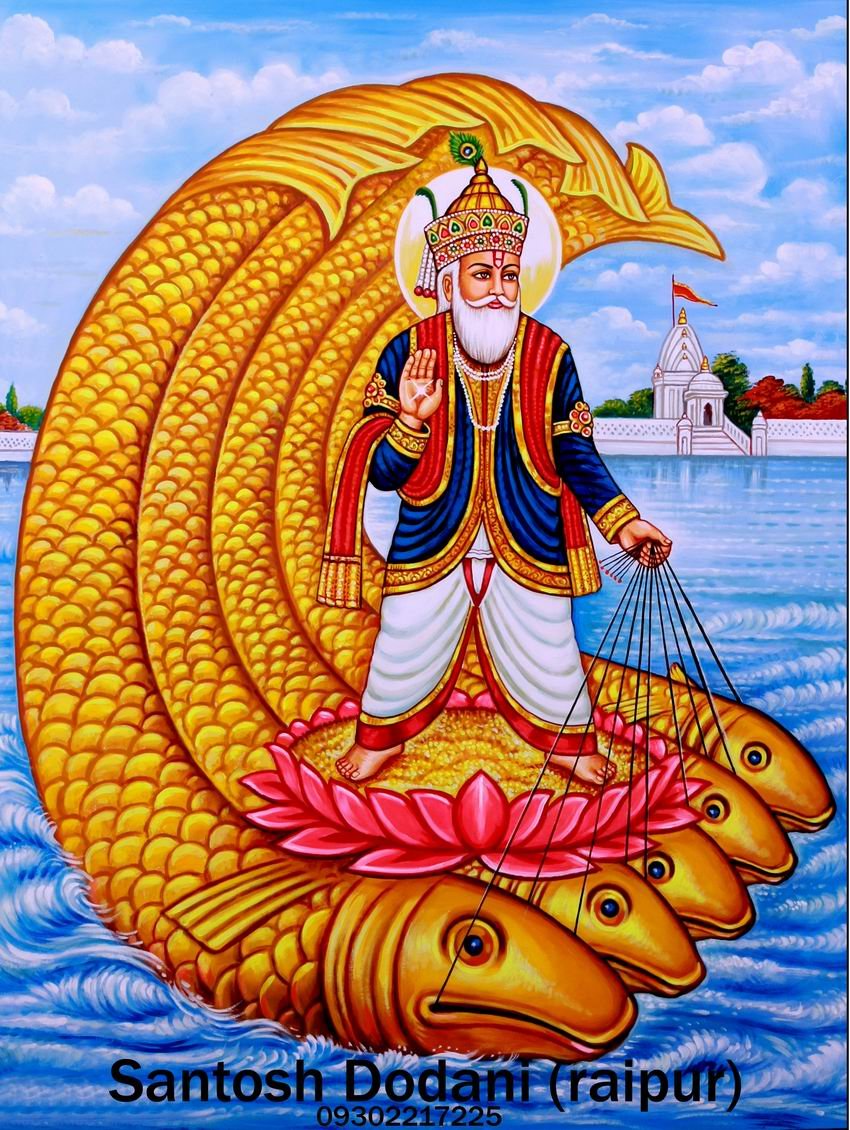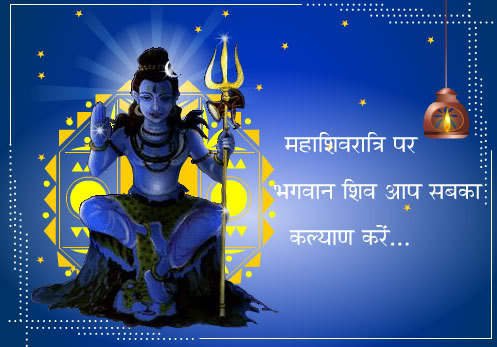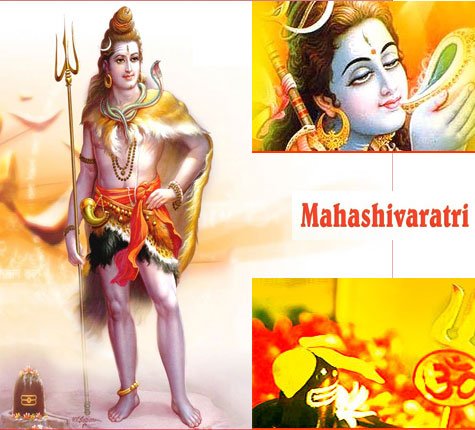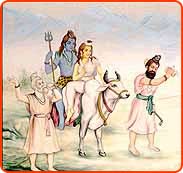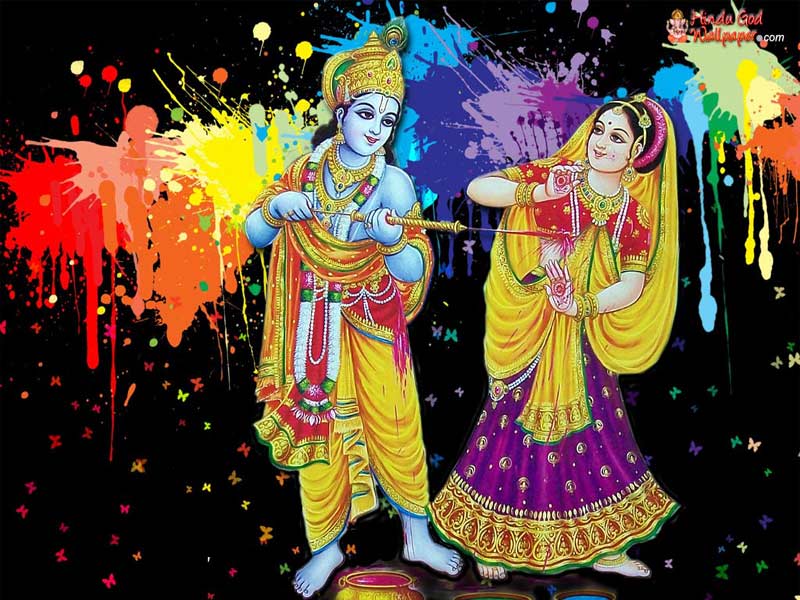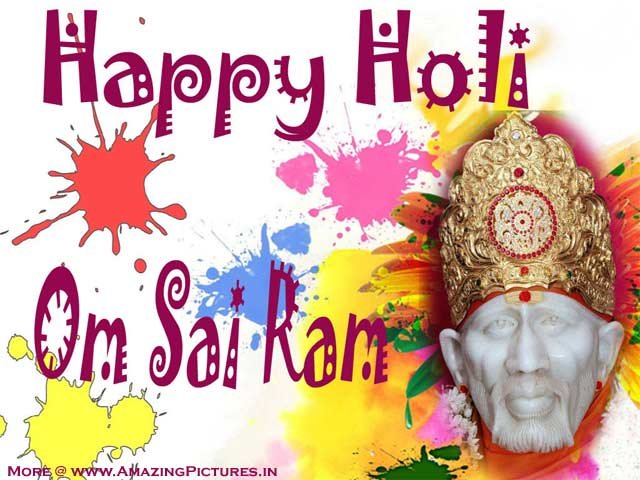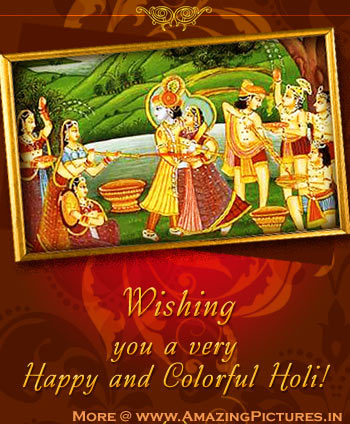 Part 1 of 4:
Part 1 of 4:
Its the CHETI CHAND time again and the SINDHI NEW YEAR. We know about it but unfortunately our young generation (most of them) do not even have any idea about what Cheti Chand is, why they call it so and who is JHULE LAL. The answer is that Sindhi Hindus have been followed a calendar known has ‘Vikram Sambat’ since the days of Vikramaditya, the Hindu King. The months of this calendar are based on lunar cycle and hence each month begins with New Moon. The first month of the year is CHAITRA and in Sindhi, it is called ‘CHET’. Hence it is known as CHET-I-CHAND.
This New Year day is also the birthday of our (Sindhi) Ishtadeva Uderolal Jhulelal. This is the reason that the New year day (Cheti-chand) is the most significant day for us Sindhis.
Who IS Jhulelal? Why and how Sindhis started worshiping him?. There is a gatha behind this all and I read it in one journal. Gobind Malhi, one of our elders and respected Sindhi has so nicely written this article for the benefit of us all (most of us may not know about it specially our younger generation born after partition and specially the ones born in foreign lands).
In Sindh, Mohamed Bin Qasim defeated Raja Dahar, the last of the Hindu Kings, treacherously. Sindh was annexed by Khalifa of Al Hilaj to his kingdom and was administered by his representatives. They spread Islam rather with the power of sword than the conviction of its being a better belief.
Later, in 10th century Sindh came under the rule of Sumras, who were converts from Hinduism to Islam. They were neither religious bigots nor fanatics. While they made Sindh free from the foreign rule, they were also tolerant to all other religions. But there was one exception in the Sumra’s reign. The province of THATTA being far away from capitol, maintained its separate identity and influence.
This province of Thatta, in the second half of the 10th. century, was usurped by one Makrabkhan, who was personification aggrandizement and greed. He killed the then ruling Shah Sahadat Khan and himself became the ruler of Thatta under the name of Mirkhshah.
Mirkhshah was not only a tyrant but also a fanatic. He was surrounded by the flattering courtiers, who in order to be in his good books and also to earn material gains always remained in his company. These courtiers one day advised Mirkhshah: ” Spread Islam and you will be granted ‘Jannat’ after death and you will enjoy eternal bliss.” Mirkhshah was swayed away by the promise of blissful life after death. Ultimately, under the increasing pressure of the Maulvis, one day, he called Panch- the representatives of Hindus, and told them bluntly: “Either embrace Islam or be prepared to die.” for Hindus it was bolt from the blue. Though they were panicky, the Panchs pleaded for grace time to think over the ‘ Shahi Farmaan’, the majestic order.
Now, it is well known that when all the doors are closed upon man, he then thinks of God. Something of that sort happened in this case also. The Mukhi (The Sarpanch) all of sudden thought of the promise of Lord Krishna in Bhagwad Geeta, “Whenever the sins increase beyond the limit and the religion seems to be endangered, I come in the form of an Avatar ( I incarnate) and mitigate the distress of my worshippers. ” Who else could the Hindus think of at that tie but their Varun God- Water God?
It is here that the doubt arises about the exact time the Hindus got as an extension from Mirkhshah to decide between the two alternatives. Some authors of religious books put it as three days, whereas the others say eight days. But I am inclined to put it as forty days, and it is not a figment of my imagination. As there is one occasion which the Hindus (specially worshipping Jhulelal) observe Chaliho Sahab. It is performed every years by these worshippers. They enact the times of tyranny and their entreaties for God’s help. It suggests that for forty long days and nights they underwent rituals and vigil on the bank of Sindhu. They did not shave, nor did they wear new clothes or shoes. They did not use soap or oil or any opulent thing. They just washed their clothes, dried them and wore them again. In the evening, they worshipped God Varun, sing songs in his praise and pray for their solace and salvation.
At the end of the 40th. day, they heard a voice from the heaven (revealance) : ” Don’t despair. Have patience. I am coming. I will save you from autocrat Mirkhshah. Eight months from now I shall take birth at Nassarpur in the house of Ratanchand Lohano from the womb of Mata Devki, like the Lord Krishna did.” Hindus rejoiced and celebrated the occasion. After 40 days of Chaaliho, the followers of Jhulelal celebrate the occasion with festivity as ‘Thanks Giving Day’ even till today.
Immediately after that revealance the Hindus went to Mirkhshah and prayed for an extension after narrating to the tyrant the promise they had received from God. The courtiers tried to dissuade Mirkhshah from falling into, what they thought to be a ‘trap’ of Hindus. But curiosity seemed to get better hold of the tyrant ruler who somehow could not reconcile to the idea : God coming down to earth! How would that happen? He preferred to wait and watch (Wouldn’t you be curious if someone told you such story in the present days?). After all, lives of the helpless Hindus were at his mercy; he could put an end to them whenever he liked. So he decided to wait and granted them the extension with pseudo-gracefulness. The Hindus awaited the arrival of their savior with fervor and fondness.
After 3 months, the second tithi of Assu month, Hindus got the confirmation of the news of conceiving by Devki. They all rejoiced merrily to celebrate the event. Even till today, the Assu Chand Hindus celebrate the day with gaiety and gay. They organize cultural programs with mirth and merriment. Three months late on the Pohi Chand, Hindus again prayed to Daryah Shah (the Lord of Waters) reminding Him of His promise. And Lo!! Right on the dot on Cheti Chand, two tithis from new moon of CHET. Devki gave birth to a handsome bony boy. As if to proclaim the auspicious event , unseasonal clouds collected on the sky and brought down the torrential rains, to welcome the new Avatar. The new born infant also hailed is birth with a miracle. He opened his mouth and his parents saw therein Sindhu flowing and also an old man on PALLO fish. Pallo fish is very tasty species of fish and its peculiarity is that it swims against the current. Devki went to the banks of Sindhu and performed ‘Jado’ which means praying to Water-God. All Hindus celebrated the birth of the child with songs and dances.
Part 2 of 4:
It was due to the tragic holocaust of partition, the Sindhi community scattered and disbursed allover. Everyone was thinking of only one thong. Leaving Matra Bhumi (Birth place) was very difficult. Come to think of it. If you are asked to leave your birthplace, where you spent all your life, and going to someplace which is alien, unknown. How would one feel? One could loose one’s mind. Not only that, there was also fear of danger of getting harmed by the present occupiers of Pakistan. Possibility of losing life. Every one was more concerned about making a new living in a foreign land( present India) getting back to decent life (as we were forced to leave without any money, only Rs. 10- per head) and a few sets of clothing. Sindhis left without money, without clothes and personal possessions and this made them forget about their God, Jhulelal. The golden thread of faith and fervor had been lost.
Out of all these stranded Sindhis, there was this one godly soul. Professor Ram Panjwani, born and bred in Larkana , from a place called Dokri (quite near to Mohen-jo-Daro). Popularly known as Dada. He saw the light and realized the reason for our suffering in new lands. We were penniless, landless and Godless. This could have been the reason for our sufferings. To helps us get relief from the sufferings Dada Panjwani rekindled the light and started with ‘JEKO CHAWANDO JHULELAL TANHIJA THINDA BERA PAAR’ and all Sindhis from every nook and corner of the earth, started remembering Daryashah and Daryashah started helping them like he did the Sindhis during the days of Mirkhshah. Dada Panjwani, filled with feelings of love and compassion for Sindhi brethren in distress, travelled from place to place reminding the Sindhis of their blessed God and their great heritage, awakening them for their dire need for unity of the community and their living in unity of the community and their living in atmosphere of solidarity, universal love and brotherhood. Dada did this not only in all parts of India but he went wherever the Sindhis, may it be St. Thomas to Singapore, New York to New Zealand, Brazil to Bangkok, Las Vegas to Laos and Lagos, Denmark to Dubai,. He reached out to them to remind them of Sindh and sindhi songs, Chej of Bhagat Kanwar Ram and above all about that Jhulan, who had saved Sindhis then and who, we prayed again to give us respectable Roti, Kapda and Makaan. Only after this rekindling of the jyoti which reminded Sindhis of our Sindhi God Jhulelal, things started moving for all Sindhis. Performing Pooja and having baharana every month, made our Sindhis more prosperous in every way. Jhulelal once again came as a saviour. Now read on the 2nd part:
An astrologer-an ascetic person who looked into the horoscope of the new born child, proclaimed that this was not an ordinary child. He predicted that the child will be a great warrior and his popularity will outlive him. He named the child Udaichand: Uday in Sanskrit means moon-like light, here it means one who brings light in darkness. A Punjabi astrologer in Nassarpur called the child Uderolal; Udero in Sanskrit means one who is near water or who has sprung from waters. Inhabitants of Nassarpur called the newborn Amarlal, an immortal child. A miracle took place from the very day of the birth of the child. The cradle wherein Uderolal rested, always kept on swinging on its own. It is because of this that Uderolal is also called ‘ Jhulelal’- the swinging child. And the cradle swung to and fro like the waves of Sindhu! The name Jhulelal was most befitting and has accordingly become most popularly recognized. ‘Jhulan’ came to be accepted as the pet name of child. Everyone knows that the Palla fish too by its very nature, swings like a cradle.
Devki, the Jhulelal’s mother did not live for long thereafter. After her death Ratanchand remarried. Jhulelal sucked step mother’s milk . This can be compared with Sri Ramchandra’s sucking from his step mother Kekai’s instead of his real mother Kaushaliya and Lord Krishna doing similarly of Mata Yashoda.
In the meantime, Mirkhshah also got the news of the birth of the mysterious child. He called the Panchs and asked them how long he was supposed to wait for their reply to his demand: “Either accept Islam or die”. Hindu now being quite convinced and confident of their savior having really taken birth, implored, “A few months more our Lord! Savior of Hindus has already taken birth. He is the Water God…”.
Mirkhshah scoffed at the very idea: A child saving Hindus! He said sarcastically. “All right! Neither I am dying, nor you people are leaving this land: I shall wait . When your savior embraces Islam, I am sure you will follow suit.”
The Maulvis pressed upon Mirkhshah hard for settling issue without any further delay. But the very idea of a child becoming more than a match for him could not be digested by Mirkhshah. He told the Maulvis, “Wait and watch. We shall surely win. Why make haste unnecessarily?”. It is said, not without reason, that curiosity killed the cat. After disposing of Hindus, Mirkhshah became very anxious to have a firsthand knowledge about the mysterious child. He decided to deputy one of his ministers name Ahirio to Nassarpur to see and gauge things for himself.
Ahirio decided to make use of deceit. He took a rose dipped in deadly poison and asked Ratanchand to take him to the new born baby. Ahirio was astonished at the very first glimpse of the child. He had never seen such a dazzling and charming baby. He hesitated for a while, but soon mustering up his courage, he extended the flower to the baby’s lips. Uderolal gave a meaningful smile and blew the flower in one breath. The flower flew out of Ahirio’s hand and fell far away on the ground. Then Ahirio saw that the child was no more in the cradle. Instead, an old man with white long beard was staring at him! All of a sudden the old man turned into a lad of sixteen years! Again the scene changed; he saw Uderolal on a horseback with a blazing naked sword in his hand and there were rows of warriors behind him. It was a scene of battle field. A cold shiver passed through the body of Ahirio, who bowed his head in reverence and entreated, ” Have mercy Sindhu Lord. I am convinced, Hindus are safe…”.
On his return to Nassarpur Ahirio narrated all the miraculous occurrences to Mirkhshah. Mirkhshah said, “It seems you have been under the spell of magic. How can a child turn into a young boy and an old man and then a warrior on the horse back, simultaneously? Impossible! Next to impossible!!.
But in the heart of his heart, Mirkhshah was scared.That very night in his sleep, he dreamt a dreadful scene…. A child was sitting on his thorax; then it changed into an oldman with white beard, sailing in the sea with a book in his hand. Then the scene changed again. He was confronted by a warrior with a drawn sword; on the battle field and saw himself losing ground…..”
Next morning he called for Ahirio and asked him to think of any counter action in the matter. Ahirio advised him to lie low for the time being and wait and watch.20
Uderolal as a child, performed many miracles for Ratanchand and the inhabitants of Nassarpur. They were all fully convinced that God Himself had descended on the earth to fulfil his promise made in Bhagwad Geeta. Nevertheless, Ratanchand performed all the routine ceremonies as a parent. He had the tonsure of the child’s head called ‘Munnan’; then he took the child to a Vedic scholar and requested him to take the child under his protege. The FDIC scholar smiled meaningfully and started imparting knowledge- worldly as well as spiritual to the child.
When the question of giving of ‘Gur-Mantra’ to Uderolal came up. Ratanchand took the child to Gorakhnath, who said, “Yes, for the namesake I shall give him the ‘Gur-Mantra’, otherwise I know well, he needs none; on the contrary he has to teach us all so many things worth learning”. Uderolal received the ‘Gur-Mantra’ of ‘ Alakh Niranjan’ from Gorakhnath.
Udero’s step mother wanted him to earn some money for the family. She gave him a container full of boiled beans to sell in the market. Udero instead of going to market, went to the banks of Sindhu. Half of the contents he distributed free among the beggars, poor and pious ones who lived on the river bank. The other half, he made an offering of it to Sindhu. During the afternoon he talked to the children and elderly persons about the spiritual wealth on the river bank. In the evening the same container emerged from the waters, and came swimming to him. The container was full with fine quality of rice.
When the step mother started getting the fine quality of rice every day, she got suspicious. One day she sent Ratanchand after Udero. Ratanchand followed Udero discreetly all the day and witnessed the miracle. He bowed to Udero from a distance and accepted either as the God Himself or his Messenger.
On the other hand, Mirkhshah was once again being pressurized by the Maulvis. They told him not to waste any more time and that he should either convert the Hindus to Islam and vouch-safe for his own blissful life in’ Jannat’ or be ready to be declared as an associate of ‘kaffirs’ the infidels.
Since Mirkhshah did not like to be branded as an infidel, he had no other alternative but to meet Uderolal either face to face privately, or on the battlefield. He asked Ahirio to arrange for a private meeting with Uderolal. Ahirio, who had in the meantime, become a devotee of Daryashah (Uderolal), went to the bank of Indus and prayed to Water-God to come to his rescue and save him from the onslaught of the king and religious fanatic. To Ahirio’s astonishment, he saw an oldman with white beard in saintly clothes, sailing on a Palla (fish) ,going against the tide, north way. Ahirio’s head bowed in adoration and admiration and he understood once and for all that Uderolal the Water-God, was holy man for Muslims also. He proclaimed at the top of his voice that Khwaja Khizr swam the Sindhu against tide and rested on an island near Rohri!
Part 3 of 4:
Then Ahirio saw Udero springing from Sindhu on a horse back, with a flag in one hand and sword in the other, followed by endless troops of warriors. Ahirio bowed once again to Uderolal and pleaded, “This is a private meeting, why to bring with you so many warriors?” Uderolal made the troops vanish into thin air. When Uderolal came face to face with Mirkhshah, he said,”Whatever you see around yourself is the creation of one and only God, whom you call ‘Allah’ and Hindus call ‘Ishwar’. Hindus Muslims and other human beings are all His creation”.
Maulvis urged upon Mirkhshah not to listen to infidel’s talk of Udero, but to arrest him and to put him in jail till he agreed to embrace Islam. They pleaded, “Sir, do not miss the golden opportunity. Arrest Udero while he is alone.”. Mirkhshah wavering as usual, was ultimately carried away by the pressurization of Maulvies and ordered the arrest of Uderolal. As the officials of the court moved towards Udero, water started flowing in the court. all the courtiers including Mirkhshah found themselves inundated in water. Simultaneously, the fire also broke out;t and the Palace became towering inferno. There was no way to escape the wrath of the deity. Udero spoke again: “Mirkhshah, think it over again. Your God and mine are not two different ones. Had Almighty so desired, He could have ordained Hindus to be born Muslims. But no; God wanted unity in diversity. All world is His manifestation.
Mirkhshah beseeched tearfully, “My Lord! I realize the truth now. Save me and my courtiers from this ravage.” Immediately the fire was blown out on its own and the water receded.
Having been pacified , Uderolal pronounced “Fire is the first principle of Universe and Water is the first principle of life. Worship of God is to be done in its blended form of Jyoti (light) and Jal (water); and let every human being worship the Almighty with whatever the name he desires. Let there be a bond of brotherhood among all Sindhis-Hindus as well as Muslims”.
Mirkhshah bowed respectfully and agreed to treat Muslims and Hindus alike. Thereafter the persecution of Hindus was stopped forthwith and they were allowed to retain their identity.
Uderolal then told Hindus to go home and attend to their routine work. Before they dispersed Uderolal told them to think of him as an embodiment of light and water and establish a temple to perpetuate the memory of the unusual transformation of Mirkhshah. “Day and night”, he said “Light one candle inn a temple and water should be available for ‘Daat’ (holy sip).
Uderolal had two older brothers, Sonaram and Bhedoram. They were neither impressed by Uderolal’s victory over Mirkhshah nor were they enamoured of his miracles. They kept away from him. Uderolal tried his best to make them give up their worldly materialist ways and to adopt spiritual path; but they bluntly and impudently refused to be his followers. Then, Uderolal turned to his cousin Pagad and named him the first Thakur- priest of the religious sect which believed in Water-God.
Pagad followed Uderolal wherever he went. They visited Rohiri by the river side and a ‘ghaat’ was built there, which later on came to be known as ‘Udero-ghaat’ . It was near Zindah-Pir, the place where Uderolal, as Khwaja-Khizr swam against the flow of the river. While he was with Pagad, Uderolal performed many a miracles, which convinced Pagad beyond any shadow of doubt that Uderolal was really the River or Water-God.
Uderolal accompanied by Pagad, went to Thatta again. Mirkhshah was delighted and elated. He welcomed him with awe and adoration. Uderolal’s temple, by then, had become quite famous since both the Hindus and Muslims prayed there regularly and reverently. From Thatta, Uderolal and Pagad went to Hinglaj, from where Uderolal visited Manoharo island, off the shore of Kalachi (later known as Karachi). ‘ Lal Saain Mandir’ was built at Manoharo too. Ultimately Uderolal and Pagad returned to Nassarpur.
Uderolal gave seven symbolic things to Pagad. These seven form the essential elements of Daryahi sect- believers of Water-God. These seven are:
1) Verho: Ring, which acts like an Allauddin’s lamp; by touching it, one gets what he wishes.
2) Light: Always lighted earthen candle which reminds of the Almighty and His mercies.
3) Khantha: ‘Pakhar’ A cloth cover which acts like a shield against attacks of enemy.
4) Deg: A huge metallic vessel in which rice is cooked during a marriage or any festival. It is blessed with the boon that irrespective of the number of people to be fed, can be fed and it never gets empty.
5) Tegh: A Sword, Vishnu Devta gave to Bhawani to kill demons or sinners. It is a symbol of Vishnu.
6) Dhokla: Damru, Lord Shiv’s symbol.
7) Jhari: A Kalsh, symbol of Brahma.
Thus Daryahi Panth created by Uderolal has blessings of the original Trimurti of Gods in Hindu Mythology. Brahama, Vishnu and Mahesh.
Part 4 of 4:
Sant Pagad built a temple called ‘Lal Sai Mandir’ at Nassarpur and kept the essential seven symbols given by Uderolal there. More and more people, both Hindu and Muslims visited the Mandir everyday. Uderolal also asked Pagad that after the songs (Panjra) are sung in praise of the River-God (Water-God) every evening, ‘Palav’ ceremony must be performed; it means holding the lower part of shirt, towel, or any other piece of cloth stretched out to beg from the Lord the good and welfare of all; one should also pray for the wellbeing of others before one asked anything for oneself. The Panjras are supposed to be five lines. An specimen is given below:
My Warrior Sanwal Shah came from North, All the trees and plants became green, and he made the fate of us all also green as the grass was green Mother tells (her sons) purchase butter and eat, When butter only a paisa for a quarter (Ser or a ‘pau’) Here is Sanwal Shah (Uderolal) who bestows blessings on all.
As water is quite essential for any vegetation and other creatures, all the Panjras talk of compassion, truthfulness and benignity of Water-God, who grants reprieve to the sinners and assists and obliges one and all. With the changing times, panjras are no more restricted to only five lines, today; some are of two lines and some even seven lines. But ‘Panj’; the conception of five, has various connotations; the 5 temptations man is subjected to, the tributaries of Indus are also five,etc.
Uderolal taught the vidhi (ritual procedure) of Bahrana Sahib, symbolic of Uderolal’s worship. How a Bahrana made and performed has also been explained below:
Exquisitely decorated THAAL in the center of which is placed the idol of Uderolal; a Kunri (an earthen vessel) its mouth covered with red cloth, full of water; knead flour in the shape of a cone, like SHIVALINGA, adorned with cloves, cardamoms, betelnuts (supari), misri (sugar candy) are kept on either side of the Modak. The garlands of red roses, marigold flowers adorn the Bahrano Sahib. Fragrance springs from the burning scented dhoop and agarbathis, candle flames. Small earthen deepaks shine like twinkling stars which add beauty beyond words,to the whole thing. Then the ‘Chejis’ perform the Chej. Chej literally means crescendo, flood or inundation. This dance form is a dance of joy. This dance requires great vigor, enthusiasm,abundance and rhythm. It is performed with Sobha Yaatra (victory dance) of Jhulelal’s Bahrana Sahib. It resembles Gujrati Dandia Raas.
A circle is formed by Chhejaris (dancers) with dandies (sticks) in their hands. They dance in circle, providing their own taal by clapping sticks to each other’s sticks with the rhythm of DUHUL (dholak) and tune of Shehnaai. More than seven dancers are required to create abundance.
Various patterns are formed during the dance. Slowly and gradually, the rhythm becomes faster and faster and generates more and more ecstasy and joy.
After giving all the symbols and teaching fundamental essential rituals of Daryahi Panth to Pagad, Uderolal again went on a tour of Sindh and far beyond to propagate his teachings. How a prayer to Jal (water) and Jyoti(light) can lead his devotees to their worldly and spiritual welfare and bring about the ultimate salvation of their souls. In this regard Uderolal wanted to bind the people of the land, both Hindus and Muslims, into a bond of unity and spiritual harmony. He wanted to impress upon his followers the truth that all paths ultimately lead to one destination i.e oneness of the God and oneness of the devotees. He expected a concrete contribution from Muslims and sought their active co-operation building the Mandir and spreading his teachings. By this time Uderolal was twelve years old.
He took Kodan a teenager son of the second Thakur after Pagad Getturam and went to Hala, ten miles from Nassarpur. There he saw a well nearby a barren land. He asked the Muslim old man, who claimed the ownership of the well, whether he would sell the well and adjoining land. Mamman, the old man, looked at the youngster and sarcastically said,”show me the money first and then I shall reply”. Uderolal drew two lines on the ground and started digging in-between. To the surprise of the old man, gold and jewelry started emerging out of the earth. Uderolal told the old man,” Take away as much as you can but give us the well and the land..”. Mamman was overwhelmingly influenced by the miracle. He reverently bowed to the Uderolal and said ” So you are the godly being who has come on this earth to teach love and brotherhood. I shall give you not only the well and the land but also be your devotee. But first let me bring my wife. Why should she also be not benefited by your presence?”
Both the old man and his woman not only gave the well and the land but assisted Uderolal in constructing the Mandir known later as ‘Uderolal-jo-Mandir’. Mamman couple became its first Mujawars-caretakers. Muslims continued to be its caretakers thereafter.
This ‘Uderolal-jo-mandir’ became the nucleus of pilgrimage for both the Hindus and Muslims. When railways came to Sindh, there was no such station as Uderolal. People used to alight at Tando Adam. But the successive and ceaseless efforts of the pilgrims and miraculous occurrences, compelled the Government to build a railway station near the village that had sprung around the Mandir.
After returning to Nassarpur, Uderolal realized that the purpose for which he had come to the earth was over. At that time Uderolal was just thirteen years old. Oneday he called Pagad to his side and told him to carry on with the mission of building temples and spreading his message. ” Your descendants will be known as Thakurs, the privileged priests and my followers will be known as Shewaks. For every temple, there will be a ‘Babo’ who will conduct the day to day prayers and perform religious ceremonies regularly.
Pagad and others were sad to know all this since the idea of being separated from Uderolal, their leading light, was too much to bear; but they had no choice except to abide by the will of the Master. Uderolal selected a place nearby a village Jhijhan to give up his earthly being.
Hindus and Muslims from far and near came to witness this unusual scene. Mirkhshah’s representatives were also present there. As soon as Uderolal’s soul left his body, they took over its charge and said, ” Under the instructions of Mirkhshah we will build up a “Turbat” and Quba” (a tomb) according to the dictates of Islam”. The Hindus resented this stand. They said, “We shall build a Samadhi according to the Hindu customs”. While the debate was going on, heavy rain started pouring in. There came a voice from heavens; ” Behold, make my shrine acceptable to both, Hindus and Muslims; let its one part be like a temple and the other part be like a Dargah (shrine). I belong to all of you”.
Thus ends the story of Uderolal, based on some historical events, folklore; it is an unusual mixture of facts and fiction, one can even call it partly mythology too.
Daryahi Panth worshipping and following of Uderolal predominated the way of life in Sindh for more than 100 years. Then came Pir Usman Shah Marwandi (Lal Shah Baz) who settled at Sehwan. He brought with him another philosophy- Sufisim which was akin to Daryahi Panth in as much as it also emphasized on brotherhood of mankind. It differed from Daryahi Panth in that it believed in a formless God, who was omnipresent but seen by no one. Muslims Goodman embraced Sufisim and adopted Sufi way of life. Even many Hindus became the followers of this philosophy.
The Lals, Jhulelal and Qalander have been quite popular with Hindus and Muslims of Sindh. There is a song in Saraiki dialect, praising jointly both Lals’ Lal Meri Pat rakhio Bhala…. The song has been sung by almost all artist both Sindhis, Hindus and Muslims, and also artists from other communities. Bhagwanti Navani made a Sindhi version which became famous all over the globe.
Dada Ram Panjwani got an idea, as we Sindhis had left our home and come to alien lands and just to remind all Sindhis about Jhulelal- our Sindhi God, gave a slogan; Jeko chawando Jhulelal tanhija theenda bera paar. (whosoever says Jhulelal, will find all his desires fulfilled. Thus through Dada Panjwani, Jhulelal gave hopes and aspirations to all distressed Sindhi refugees, who soon became Pursharthees from Sharnaarthees with Tokal jo Turho as symbol of faith and confidence for Sindhis.
Is the Story of Uderolal based on history? May be or may not be. It is for historians to adjudge. Dada Panjwani said,” For me it is sufficient that faith counts more than facts, Faith has established Jhulelal as Asht Dev of Sindhis- Community God of Sindhis”. He says, ” For us it suffices that Uderolal is Lord of the Water and Light. He inspires us to believe in unity and brotherhood of mankind. He raises us above the differences and distinctions of caste, colour and creed”.
A God was incarnated with ever increasing followers. Ultimately Jhulelal became the Community Deity of Sindhis, a Community symbol. “Though Sindh is not on the map of Independent India” said Dada Panjwani, “Sindh is wherever Sindhis live. Uderolal continues to be a bond of unity between Sindhis allover and every where”.
Let us also celebrate the Cheti Chand. The Birthday of our SINDHI GOD.
Prem Sa Chavo:
Ayyo Lal Sabhi Chovo
Jhulelal – Bera hi Paar
This story is by Shewak Nandwani, Bangkok.
Sources: http://www.jhulelal.com/infotainment/complete-story.html
 Amritsar Temples Photo Gallery, Famous Temple and Gurdwara Pictures, Information and History Amritsar Temples is the best place where you find beautiful collections of Amritsar Temple pictures, Info and history like golden temple, durgiana mandir, model town, mata lal devi mandir, shivala bagh bhayian and more. Amritsar Famous Temples, History, Information, About Historical Mandir, Golden Temple Pictures, Harmandir Sahib Gurdwara, Swarn Mandir, Darbar Sahib Amritsar, Durgiana Mandir Amritsar, Bada Hanuman Mandir Amritsar, Holy City Amritsar Pictures, Famous Amritsar Places, Shivala Bagh Bhayian Mandir,Bhadra Kali Mata Mandir, Chintpurni Mata Mandir, Ram Talai Mandir, Ram Tirath, Model Town, Mata Lal Devi Mandir, Shaheeda Sahib Gurdwara, Vaishno Devi Mata Bhawan Pictures, Radha Sawami Baba Ji Pictures, Veer Bhan Shivala, Gurdwara Chheharta Sahib, Sankat Mochan Hanuman Mandir, Gurdwara San Sahib, Banke Bihari Mandir, Gurdwara Goindwal Sahib, Baba Budha Sahib, Bohli Sahib, Itihasik Temples Pictures Download, Baba Bhoot Nath Maha Kaleshwar Mandir
Amritsar Temples Photo Gallery, Famous Temple and Gurdwara Pictures, Information and History Amritsar Temples is the best place where you find beautiful collections of Amritsar Temple pictures, Info and history like golden temple, durgiana mandir, model town, mata lal devi mandir, shivala bagh bhayian and more. Amritsar Famous Temples, History, Information, About Historical Mandir, Golden Temple Pictures, Harmandir Sahib Gurdwara, Swarn Mandir, Darbar Sahib Amritsar, Durgiana Mandir Amritsar, Bada Hanuman Mandir Amritsar, Holy City Amritsar Pictures, Famous Amritsar Places, Shivala Bagh Bhayian Mandir,Bhadra Kali Mata Mandir, Chintpurni Mata Mandir, Ram Talai Mandir, Ram Tirath, Model Town, Mata Lal Devi Mandir, Shaheeda Sahib Gurdwara, Vaishno Devi Mata Bhawan Pictures, Radha Sawami Baba Ji Pictures, Veer Bhan Shivala, Gurdwara Chheharta Sahib, Sankat Mochan Hanuman Mandir, Gurdwara San Sahib, Banke Bihari Mandir, Gurdwara Goindwal Sahib, Baba Budha Sahib, Bohli Sahib, Itihasik Temples Pictures Download, Baba Bhoot Nath Maha Kaleshwar Mandir
